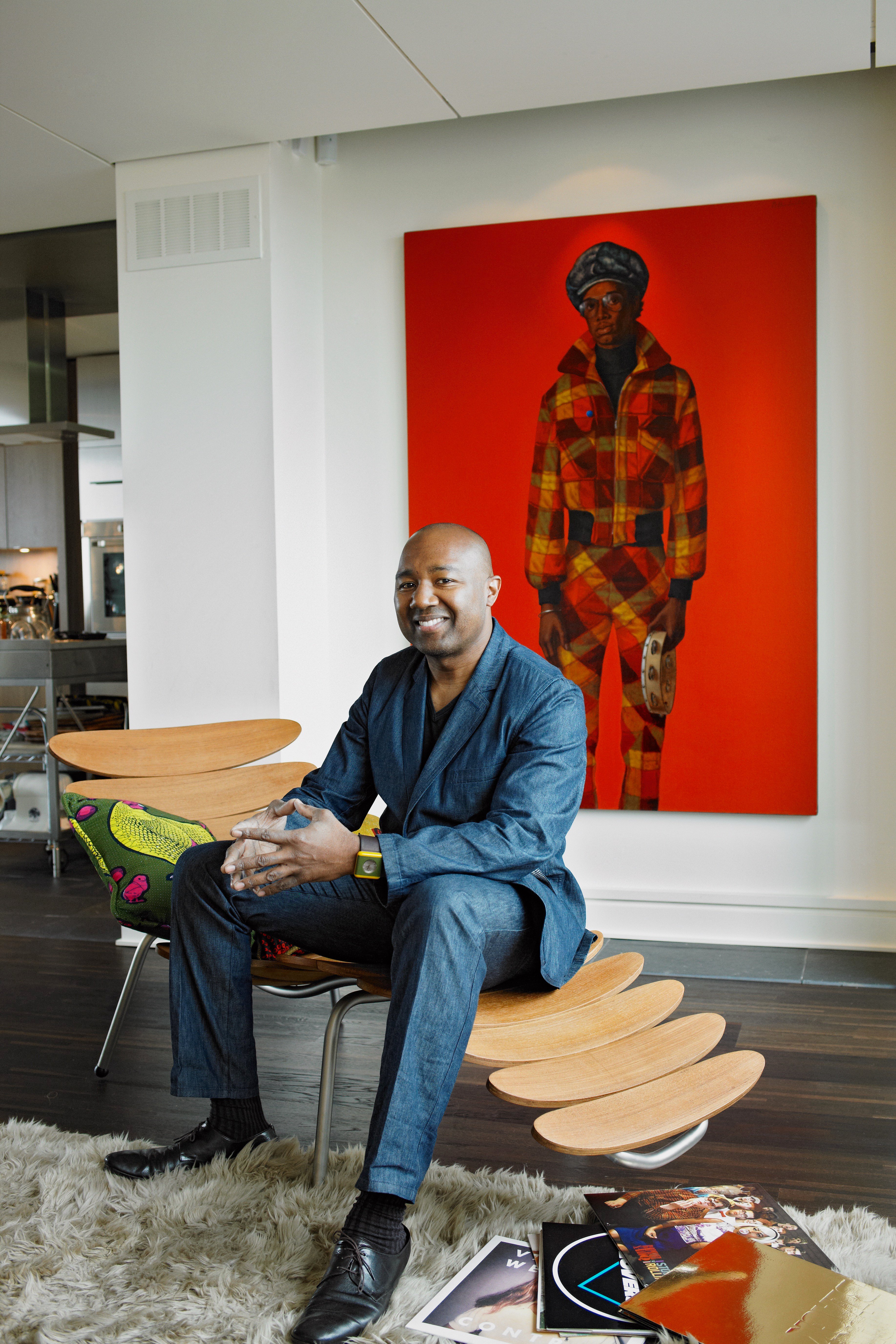
A version of this story first appeared in the spring 2020 Artnet Intelligence Report.
Collector Kenneth Montague, founder of Toronto-based Word of Mouth Dentistry and Wedge Curatorial Projects, speaks to Artnet News about his inspiration to begin collecting and his increasing focus on African-Canadian artists.
What was your first acquisition?
Couple in Raccoon Coats (1932) by James Van Der Zee, a Harlem Renaissance photographer. As a 10-year old, I saw it at the Detroit Institute of Arts, and it burned in my brain. I’d never seen anything like it.
What was your most recent acquisition?
Tyler Mitchell’s Untitled (Hijab Couture) (2019), which is the cover image from Antwaun Sargent’s book The New Black Vanguard.
What is the most expensive work of art that you own?
Probably Barkley Hendricks’s Blood (Donald Formey) (1975), which is in [the traveling exhibition] “Soul of a Nation: Art in the Age of Black Power.” It put my collection on the map.
Tyler Mitchell, Untitled (Hijab Couture), New York (2019). Courtesy of Dr Kenneth Montague/The Wedge Collection. © The artist.
Where do you buy art most frequently?
From the artists themselves or from galleries, but always after seeing the work at shows, biennials, or fairs. I have spontaneous interest, but I do research. I try to get the best work, and that’s not always the one that’s left on day two of Art Basel Miami Beach.
Which works or artists are you hoping to add to your collection this year?
Increasingly, my focus is on African-Canadian artists. I’d like to get an early work of June Clark’s for the collection, as well as one of Sandra Brewster’s new “Blur” pieces. I also want a work by Curtia Wright, a young painter who is part of the Black Artists Union, a collective started by a group of recent graduates in Toronto. They’re doing really interesting work, speaking to a younger generation about growing up black in Canada.
What work do you have hanging above your sofa?
Alexander Calder’s Our Unfinished Revolution (1975–76), a set of 10 color lithographs. It was a gift from my aunt Edith Tiger. She commissioned it from Calder as a celebration of the 25th anniversary of her [activist group] the National Emergency Civil Liberties Committee. She sent it to my dental office [late in her life] with a note that said, “Here’s something special for you. Now start collecting art!”
Kehinde Wiley, Portrait of Doctor Samuel Johnson (2009). Courtesy of Dr Kenneth Montague/The Wedge Collection. © The artist.
What artworks do you have in your dental office?
The two most prominently displayed are a Kehinde Wiley and a set of prints from the 1980s by Jamel Shabazz in the waiting room. No one asked about the Kehinde for years. Now after the Obama portrait, not a day goes by that someone doesn’t come in and ask, “Hey, is that [painting] by the same guy?”
What work do you wish you had bought when you had the chance?
Of the many [artists] I love and missed before the prices went wild, Toyin Ojih Odutola is the one that still stings. Hank Willis Thomas, who is a friend whose work is in the collection, sent me [images of] a few of her beautiful drawings in pencil and said she was just out of art school, she’d been brought on at [Jack] Shainman, and I should really look at the work. I just didn’t do the research I typically do, and by the time I came around to it a year later, the prices had already quadrupled.
We hear a lot about how the middle-class or professional-class collector is a disappearing presence in the art market, but you definitely qualify as one. Do you consider yourself an exception, or is the characterization overblown?
I’m a bit of an outlier in terms of how long I’ve been doing it. I’ve been seriously collecting since about 1997. I came out of dental school very interested in local artists and art shows in Toronto, so it was a very organic process in my case. I didn’t really call myself a collector until the early 2000s, when [Studio Museum in Harlem director] Thelma Golden, who is a friend, introduced me [at an event] as “a great collector of black artists in Canada,” and I was like, “Oh, OK, I’m a collector!”
I had the good fortune of acquiring early work that very much spoke to me on a personal level about black identity and representation. I could get an amazing Malick Sidibé photo for $1,500. Then suddenly the art market jumped on it, and the prices started jacking up. I’m fortunate to have had the ability, desire, and courage to buy those works when some people I knew were asking, “Why are you doing this?” It’s a happy accident they went up in value.
A version of this story first appeared in the spring 2020 Artnet Intelligence Report. To download the full report, which has juicy details on how A.I. could transform the art industry, Inigo Philbrick’s rise and fall as a wunderkind art dealer, and how titans of the finance industry are infiltrating the auction houses, click here.